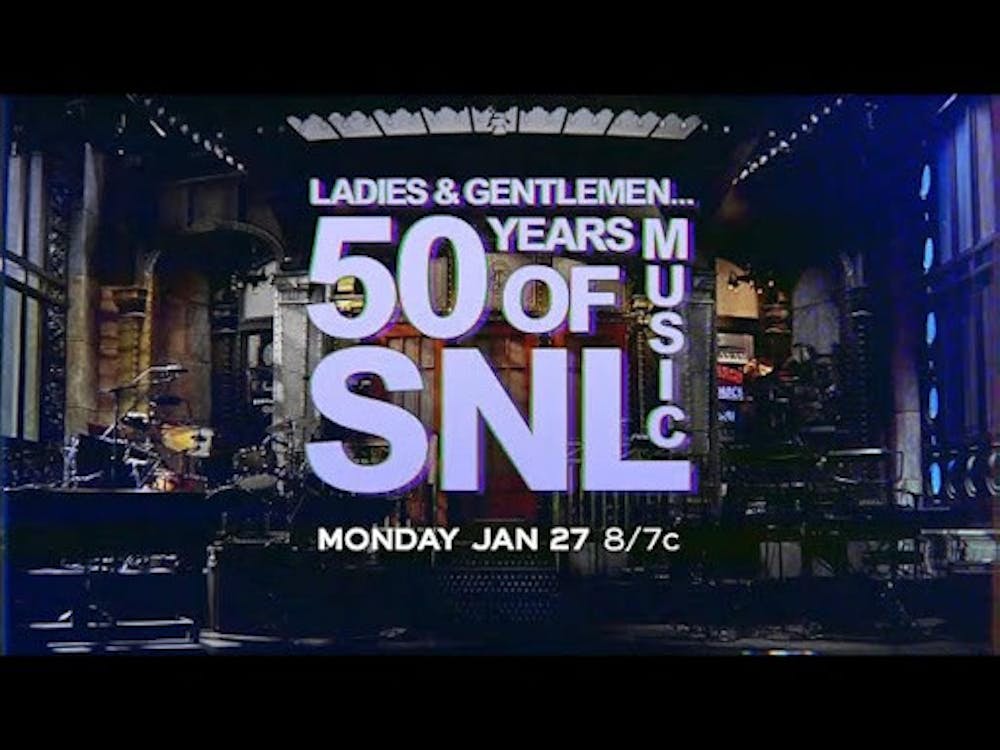By Ashley Ragone
Arts & Entertainment Editor
Since the show’s first episode in October of 1975, “Saturday Night Live” has become a defining element of the cultural zeitgeist. Over the last 50 years, hundreds of musicians have performed on the Studio 8H stage, as catalogued by “Ladies & Gentlemen…50 Years of SNL Music.”
Ever since the first musical appearance of Billy Preston, the documentary’s opening montage reintroduces notable performances from Freddie Mercury, Cher, Beyonce, Billie Eilish, Tina Turner and numerous others. The experimental and revolutionary nature of the show was a departure from the norms of the time, maintaining the relevancy of “SNL” in media by keeping its finger on the pulse of pop culture. Former cast member Maya Rudolph noted the show’s importance for the youth, as “kids were looking to SNL for the information, for the take on stuff.”
For musical artists, the opportunity to perform on “SNL” is momentous. For pop singer Olivia Rodrigo, who first appeared on the show in 2021, she noted how “being on SNL is such a rite of passage. [She is] so honored to have gotten to perform here.” The show, which has attracted millions of viewers per episode, has the ability to catapult a career, or destroy one.
For Adele, who first debuted on “SNL” in 2008, her album climbed to the top of the charts practically overnight after her performances. But for Ashlee Simpson, who was caught in a lip syncing scandal on a show praised for live performance, she was met with high criticism.
These dichotomous outcomes are what makes the “SNL” stage so highly prized, but also feared. Jack White of The White Stripes band agreed that it is a difficult thing to grapple with.
“When things start cooking, you can’t tell if you’re the flavor of the week and this is gonna be all over within a couple weeks, or if this is the beginning of a new path that you’re going down that’s gonna go on for years,” White said. For him, it was the latter; the year after the band’s performance saw the release of “Seven Nation Army,” a song now recognized worldwide as a sports anthem with over a billion streams on Spotify.
Outside of the musical guests, “SNL” has seen continued success by integrating musical elements into its sketch comedy. Ever since the comedy group Lonely Island started creating music-based skits in the early 2000s, music has become a much larger part of the overall show outside of the traditional two performances by the artist of the week.
“SNL” has still met its share of controversy. During a 1992 a cappella performance, Sinead O’Connor notoriously ripped up a photo of Pope John Paul II in protest against suspected abuse within the Catholic Church. She encouraged people to “fight the real enemy,” and she was subsequently banned from the show. In 2018, following the first election of President Trump, Kanye West called negative attention to the show after wearing a “Make America Great Again” hat and going off-script to discuss his political views toward the end of the episode’s airing.
“Saturday Night Live’s” musical legacy over the past 50 years is a testament to its unique ability to influence and grow alongside popular culture, elevating or crumbling the careers of the countless musical artists who have featured on the show. Through iconic moments, controversies, and a continual evolution of musical integration into sketches, the show remains a powerful force in the intersection of comedy and music.







